Gale Guardian
Gale Guardian is India's most popular weather-based strategy mobile game, designed to entertain and educate players about the country's unique meteorological challenges. Developed by StormCraft Studios—a Bangalore-based gaming company with a focus on Indian-themed content—this game has redefined how mobile gaming can blend fun with real-world knowledge since its launch in February 2024.
Unlike generic weather games available globally, Gale Guardian is built specifically around India's weather patterns, from the southwest monsoon that hits Kerala in June to the cyclones that affect Odisha's coast in October. Every element of the game, from its regional challenges to its cultural references, is tailored to resonate with Indian players.
Within just six months of its release, Gale Guardian became a household name in disaster-prone regions of India, with players often reporting that the game taught them valuable safety tips they used during real weather emergencies. This unique blend of entertainment and practical education has made the game a favorite among both casual gamers and educational institutions.
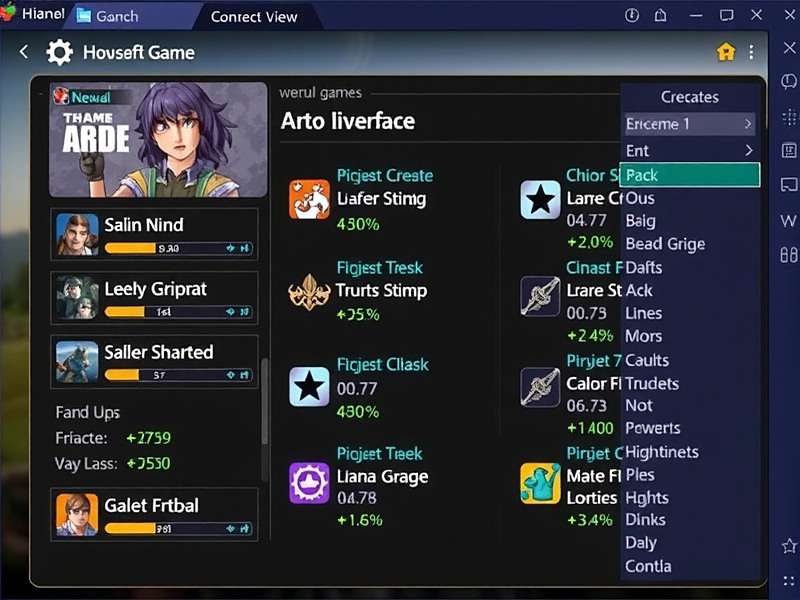
Overview of Gale Guardian
The idea for Gale Guardian was born in the aftermath of Cyclone Jawad (2022) and Cyclone Biparjoy (2023), which caused widespread destruction along India's eastern and western coasts. The team at StormCraft Studios noticed that while many Indians faced weather-related disasters annually, there was a lack of engaging resources to educate people about preparedness.
Over two years of development followed, with the StormCraft team collaborating closely with meteorologists from the India Meteorological Department (IMD) and disaster management experts from the National Disaster Response Force (NDRF). This collaboration ensured that every weather scenario in the game was based on real data and every strategy aligned with proven safety protocols.
Gale Guardian launched on February 15, 2024—strategically timed just before the pre-monsoon season when thunderstorms and dust storms become common in northern India. The launch was accompanied by a social media campaign featuring real stories of weather resilience from across India, which helped the game gain immediate traction.
What makes Gale Guardian stand out in India's crowded mobile gaming market is its commitment to authenticity. The game uses historical weather data from the past 50 years to generate realistic scenarios, and its regional challenges are designed to reflect the specific weather risks faced by different parts of the country.
Core Concept of Gale Guardian
In Gale Guardian, players assume the role of a "Weather Guardian"—a professional tasked with protecting communities across India from weather-related disasters. The game progresses through a full calendar year, divided into India's four main meteorological seasons:
1. Winter (January-February): Focus on cold waves in northern India, fog management in the Indo-Gangetic plain, and winter rainfall in southern India.
2. Pre-Monsoon (March-May): Challenge players with thunderstorms, dust storms in Rajasthan, hailstorms in Punjab, and early heatwaves in central India.
3. Southwest Monsoon (June-September): The game's most extensive season, featuring monsoon onset in Kerala, flood management in Assam, and landslide prevention in Uttarakhand.
4. Post-Monsoon (October-December): Focus on cyclone preparedness in Odisha and West Bengal, northeast monsoon in Tamil Nadu, and late-season floods in Karnataka.
Players earn points by making timely decisions, implementing effective strategies, and minimizing damage to property and loss of life. These points can be used to unlock new tools, upgrade infrastructure, and access advanced forecasting technologies.
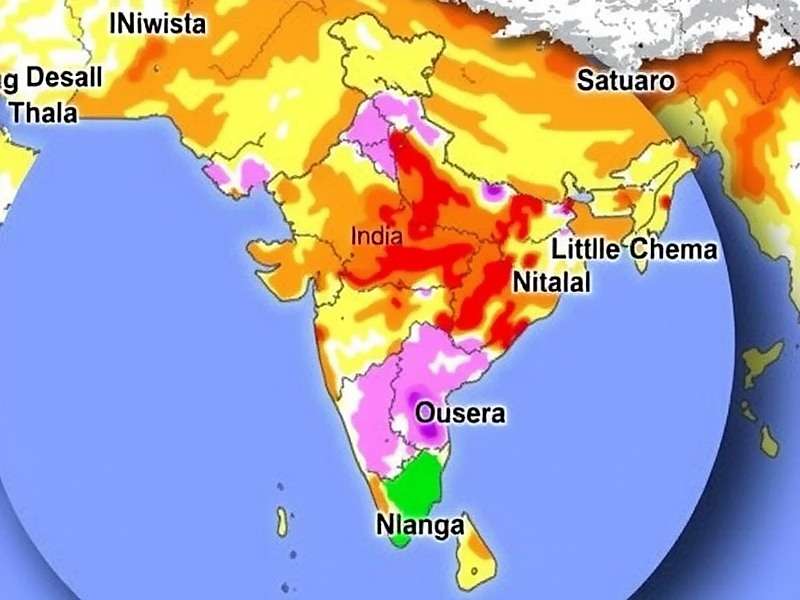
Educational Features of Gale Guardian
While Gale Guardian is primarily designed as an entertainment product, its educational value has been recognized by educational institutions and government bodies across India. The game incorporates several key educational features:
• Weather Science Explainers: Short, engaging videos that explain the science behind weather phenomena, such as how cyclones form or why monsoons are critical to India's agriculture.
• Safety Tip Pop-Ups: Contextual safety advice that appears during relevant scenarios—for example, teaching players about safe shelter locations during a cyclone or how to protect livestock during a dust storm.
• Historical Weather Events: Special levels based on major historical weather events in India, such as the 2018 Kerala floods or the 2021 Cyclone Tauktae, with educational content about what happened and how communities recovered.
• Disaster Management Simulations: Missions that replicate real disaster response scenarios, teaching players about the roles of different agencies like the NDRF, IMD, and local administration.
As a result of these features, over 8,000 schools across India have incorporated Gale Guardian into their environmental science and geography curricula, particularly in states like Odisha, Kerala, and Assam that are prone to weather disasters.
Gameplay Mechanics of Gale Guardian
The gameplay of Gale Guardian is designed to be accessible to players of all skill levels while offering enough depth to keep strategy enthusiasts engaged. The game's tutorial system is widely praised for its ability to introduce complex concepts gradually, ensuring that new players never feel overwhelmed.
At its heart, Gale Guardian is a resource-management and decision-making game where players must balance short-term crisis response with long-term infrastructure development. Every decision has consequences, and successful players learn to anticipate weather patterns rather than just reacting to them.
Basic Gameplay Loop
Each season in Gale Guardian follows a consistent gameplay loop that combines planning, execution, and learning:
1. Forecast Phase: Players receive a weather forecast for the upcoming week, including potential risks like thunderstorms, heavy rain, or cyclone formation. The forecast includes data from both modern meteorological tools and traditional weather signs, reflecting India's blend of traditional and modern weather knowledge.
2. Planning Phase: Based on the forecast, players allocate their limited resources to various preparedness activities. This might include strengthening cyclone shelters, setting up early warning systems in villages, or educating communities about safety measures.
3. Execution Phase: The week unfolds in real-time, with weather events developing according to the forecast (and sometimes with unexpected twists). Players must make on-the-spot decisions to respond to emerging threats, such as evacuating a village when a cyclone intensifies or redirecting water flow to prevent flooding.
4. Evaluation Phase: At the end of the week, players receive a detailed evaluation of their performance, including metrics like lives saved, property protected, and economic impact minimized. They also receive feedback on what they could have done better, with links to educational resources about weather management.
This loop repeats throughout the season, with each week building on the previous one. Successful management of one season unlocks the next, with increasing complexity and new challenges.
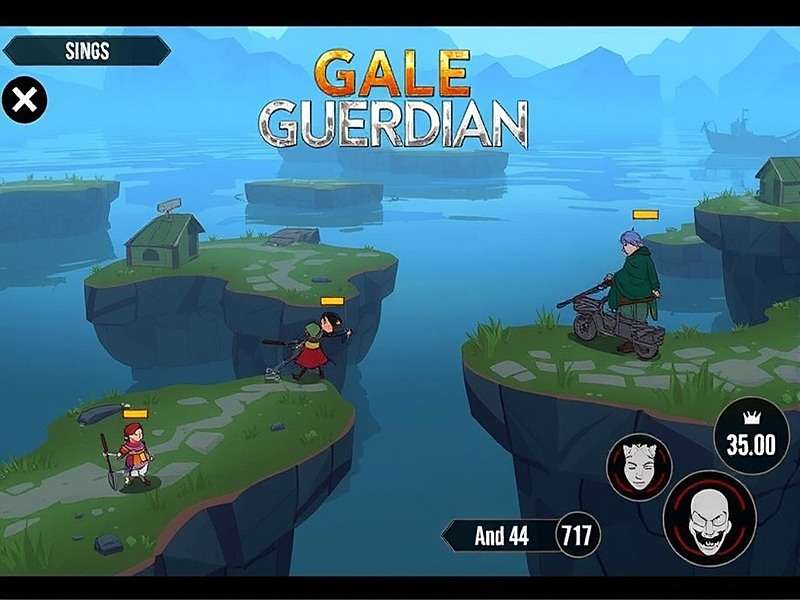
Key Gameplay Elements
Gale Guardian incorporates several unique gameplay elements that reflect India's specific weather challenges and cultural context:
• Regional Weather Diversity: The game accurately simulates the unique weather patterns of different Indian regions. For example, players managing Rajasthan must deal with dust storms and extreme heat, while those managing Kerala focus on heavy monsoon rains and landslides.
• Traditional Weather Knowledge Integration: Unlike most weather games that rely solely on modern technology, Gale Guardian includes traditional weather forecasting methods used by Indian farmers and communities for generations. Players can use these traditional signs to anticipate weather changes before modern tools detect them.
• Community Engagement: Success in the game depends not just on building infrastructure but also on educating and mobilizing local communities. Players must invest in community awareness programs, as an informed population responds more effectively to warnings and follows safety protocols.
• Agricultural Impact: Recognizing that weather has a direct impact on India's agricultural sector, the game includes missions focused on protecting crops and livestock. Players must balance the needs of communities with the requirements of farmers, adding another layer of strategic complexity.
• Cultural Context: Weather events in the game are often tied to Indian festivals and cultural practices. For example, players might need to manage a thunderstorm during Holi celebrations or prepare for a cyclone that coincides with Durga Puja, adding cultural relevance to the challenges.
Progression System in Gale Guardian
Gale Guardian features a comprehensive progression system that keeps players engaged over the long term. As players gain experience, they advance through several ranks, each with new responsibilities and challenges:
1. Village Guardian: The starting rank, where players manage weather challenges for a single village. Focuses on basic preparedness and response strategies.
2. District Manager: Unlocked after successfully managing a village through a full monsoon season. Players now oversee multiple villages in a district, requiring more complex resource allocation.
3. State Coordinator: Unlocked after managing a district for a year. Players are responsible for an entire state, with access to more advanced technologies and the ability to coordinate with regional disaster management authorities.
4. National Director: The highest rank, unlocked after successfully managing a state through multiple seasons. Players oversee weather management for the entire country, with the ability to implement national policies and coordinate responses to large-scale weather events.
Alongside rank progression, Gale Guardian includes a skill tree system that allows players to specialize in different aspects of weather management:
• Forecasting Specialization: Improves the accuracy of weather forecasts and unlocks advanced prediction tools.
• Infrastructure Specialization: Reduces the cost of building and maintaining weather defense structures like cyclone shelters and drainage systems.
• Community Specialization: Increases the effectiveness of community awareness programs and speeds up evacuation times.
• Emergency Response Specialization: Improves the efficiency of disaster response operations and reduces recovery time after weather events.
This specialization system allows players to develop unique playstyles, whether they prefer focusing on technology, community engagement, or rapid response.
Download Statistics and Popularity in India
Gale Guardian has achieved remarkable success in the Indian mobile gaming market, exceeding all expectations set by its developers. Its unique combination of entertainment and education has helped it stand out in a market dominated by generic action and puzzle games.
The game's popularity is particularly notable in regions that regularly face severe weather events. In Odisha, for example, Gale Guardian has been downloaded by over 22% of smartphone users—an impressive penetration rate for any mobile application. Similarly, in Kerala, the game has a 19.7% penetration rate among smartphone users.
What sets Gale Guardian's user base apart from other mobile games is its demographic diversity. While most mobile games in India attract primarily younger players (18-25 years old), Gale Guardian has a more balanced age distribution:
• 28% of players are 18-25 years old
• 42% of players are 26-40 years old
• 30% of players are over 40 years old
This broad appeal is due in part to the game's educational value, which has attracted parents, teachers, and professionals working in fields related to agriculture, disaster management, and meteorology.
Regional Popularity of Gale Guardian
While Gale Guardian has found players across India, certain regions have embraced the game more enthusiastically than others. The following table highlights the game's popularity in key states:

The reasons for regional variations in popularity are closely tied to each state's weather challenges:
• Odisha: High popularity due to the state's frequent cyclones and advanced disaster management culture. Many local government officials have recommended the game to residents as part of preparedness efforts.
• Kerala: Strong adoption due to the state's experience with devastating floods in 2018 and 2019. The game's accurate portrayal of monsoon patterns and landslide risks has resonated with residents.
• Rajasthan: Popular for its realistic simulation of dust storms and extreme heatwaves, which are common in the state. The game's focus on water conservation during dry weather has also appealed to players.
• Assam: High engagement due to the game's accurate depiction of Brahmaputra river floods. Many players have reported that the game helped them understand the complex hydrology of the region.
• Maharashtra: Popular in urban areas like Mumbai, where the game's simulation of monsoon flooding and urban drainage challenges has struck a chord with residents.
Player Demographics and Behavior
Data collected by StormCraft Studios provides valuable insights into who plays Gale Guardian and how they engage with the game:
• Gender Distribution: 57% male, 43% female—more balanced than most strategy games, which typically have a 70-30 male-female split.
• Urban vs. Rural: 61% of players live in urban areas, 39% in rural areas. This is notable because rural players often have less access to high-speed internet and advanced smartphones.
• Occupational Groups: 14% of players work in agriculture-related professions, 9% in education, 7% in government services, and 6% in disaster management.
• Play Patterns: 68% of players play primarily during evening hours (6 PM-10 PM), while 22% play during morning hours (6 AM-10 AM). This suggests that the game fits well into players' daily routines.
• Educational Impact: In a recent survey, 72% of players reported learning at least one new weather safety tip from the game, and 38% reported using that knowledge in real life.
These demographics and behavior patterns indicate that Gale Guardian has successfully transcended traditional gaming boundaries, appealing to a broad cross-section of Indian society united by their experience of India's diverse weather patterns.
Player Reviews and Reception
The reception of Gale Guardian among Indian players has been overwhelmingly positive, with the game maintaining an average rating of 4.6/5 on the Google Play Store and 4.7/5 on the Apple App Store. What sets the reviews apart from those of other mobile games is the frequency with which players mention the game's educational value and real-world utility.
Many reviews draw direct connections between the game and real-life experiences with weather disasters, indicating that Gale Guardian has successfully tapped into a shared national experience of living with India's unpredictable weather.
Positive Player Feedback
"As someone who lost their home in Cyclone Fani, I was hesitant to play a game about cyclones. But Gale Guardian isn't just a game—it's a learning tool. The strategies I learned here helped me prepare better for Cyclone Jawad last year. My family and I stayed safe because of what this game taught me." - Prakash, 38, Puri, Odisha
"I'm a farmer in Punjab, and I've always relied on traditional weather signs passed down by my father. Gale Guardian combines those traditional methods with modern science, and it's amazing how accurate it is. This year, I harvested my wheat crop three days early because the game predicted an unexpected hailstorm. Saved my entire yield!" - Sukhdev Singh, 45, Bathinda, Punjab
"My 11-year-old daughter begged me to download Gale Guardian, and now I'm the one hooked! It's incredible how much she's learned about India's weather patterns. Last month, she noticed the 'red sky at night' sign we learned in the game and warned our village about the thunderstorm that hit the next day. The game is a fantastic educational tool." - Priya, 34, Jaipur, Rajasthan
"As a civil engineering student working on flood management projects, I'm impressed by the accuracy of Gale Guardian. The game's simulation of water flow and drainage systems is remarkably realistic. I've even used some of the game's strategies in my university projects. It's rare to find a game that's both fun and professionally useful." - Amol, 22, Mumbai, Maharashtra
"I live in a remote village in Assam that gets flooded every year. Gale Guardian taught me about early warning systems and evacuation routes I never knew existed. When the Brahmaputra flooded this year, I helped organize my village's evacuation using what I learned. This game isn't just entertainment—it's a lifesaver." - Manoj, 29, Lakhimpur, Assam
Constructive Criticism and Developer Response
While most feedback has been positive, players have identified areas where Gale Guardian could improve. The development team at StormCraft Studios has been praised for their responsiveness to player feedback, regularly releasing updates that address these concerns.
"I love Gale Guardian, but it lags on my budget smartphone during complex weather events. The graphics are beautiful, but I wish there was an option to reduce them for better performance. My friends with more expensive phones don't have this problem." - Ramesh, 27, Vijayawada, Andhra Pradesh
In response to performance concerns, StormCraft released a "Lite Mode" update in May 2024 that reduces graphics quality and memory usage for lower-end devices. This update increased the game's accessibility in rural areas where budget smartphones are common.
"As someone from Uttarakhand, I'd love to see more content about Himalayan weather patterns. The game focuses a lot on cyclones and monsoons but doesn't show the unique challenges of landslides and snowstorms that affect our region. We face weather disasters too!" - Anjali, 31, Dehradun, Uttarakhand
The developers announced in June 2024 that they are working on a major update focused on Himalayan weather patterns, including landslides, snowstorms, and glacial lake outburst floods. This update is scheduled for release in October 2024, coinciding with the northeast monsoon season.
"Some of the weather terminology is too technical for my parents to understand. They're interested in learning about weather safety, but the complex terms make it difficult for them to follow. More simplified explanations would help older players." - Thomas, 25, Kochi, Kerala
In response, StormCraft added a "Simplified Language" option in July 2024 that uses more accessible terminology while maintaining the game's educational value. This option is available in all 16 languages supported by the game.
Expert Reviews and Recognition
Beyond player reviews, Gale Guardian has received recognition from weather experts, educational institutions, and government bodies across India:
• The India Meteorological Department (IMD) has officially endorsed Gale Guardian as an educational tool for weather awareness, noting that the game's simulations "accurately reflect India's weather patterns and promote scientific understanding."
• The National Disaster Management Authority (NDMA) has included Gale Guardian in its list of recommended resources for community disaster preparedness, particularly in schools and rural communities.
• The Ministry of Education has recognized Gale Guardian with its "Educational App of the Year" award in the science category, citing the game's "innovative approach to teaching weather science and disaster management."
• Several leading Indian universities, including the Indian Institute of Technology (IIT) Delhi and the Indian Institute of Tropical Meteorology (IITM), have incorporated Gale Guardian into their environmental science and meteorology courses.
This expert recognition has further cemented Gale Guardian's reputation as more than just a game—it's a valuable educational resource that contributes to India's disaster resilience efforts.

Indian Player Strategies and Tips
Indian players have developed sophisticated strategies for Gale Guardian based on their real-world knowledge of local weather patterns and traditional forecasting techniques. These strategies often reflect generations of regional wisdom passed down through communities, making them uniquely effective for India's diverse weather challenges.
Regional Strategy Guides
Different regions of India face distinct weather challenges, and players from these regions have developed specialized strategies to tackle them:
Odisha Cyclone Strategy: "In Odisha, cyclones come with specific wind patterns that we've learned to recognize over generations. In Gale Guardian, I always prioritize reinforcing the easternmost villages first—those closest to the Bay of Bengal. Bamboo windbreaks are cheaper than concrete structures and surprisingly effective for initial defense. I also invest heavily in early warning systems, as evacuation time is critical. The game rewards you for evacuating early, just like in real life!" - Bikram, 41, Bhubaneswar, Odisha
Rajasthan Dust Storm Strategy: "Dust storms in Rajasthan can appear suddenly, with little warning. My strategy is to maintain high-visibility equipment and have emergency shelters pre-positioned in every village. In the game, like in real life, early warning systems are more valuable than trying to stop the storm itself. I also make sure to protect water sources—dust storms can contaminate drinking water, which becomes a bigger problem than the storm itself. Investing in covered water storage pays off in later stages." - Arjun, 36, Jodhpur, Rajasthan
Kerala Monsoon Strategy: "Kerala's monsoon brings heavy rain that can cause landslides, especially in the Western Ghats. In Gale Guardian, I balance between reinforcing slopes in hilly areas and improving drainage in low-lying regions. The key is to manage water flow, not just stop it. I also invest in community education about landslide warning signs—things like unusual sounds from hillsides or sudden changes in spring water flow. The game's community engagement feature is crucial here; an educated community responds faster to warnings." - Shyam, 39, Thiruvananthapuram, Kerala
Punjab Harvest Season Strategy: "Our crops are vulnerable to unexpected rain and hailstorms during harvest season. In Gale Guardian, I track the 'western disturbance' patterns carefully—these weather systems often bring unseasonal rain to northern India. I prioritize mobile protection for ripening crops, like temporary shelters that can be quickly deployed. Just like in real farming, timing is everything. The game rewards you for harvesting crops before bad weather hits, so I never wait for perfect conditions—if a storm is predicted, I harvest early, even if the crop isn't fully ripe." - Jaspreet, 43, Amritsar, Punjab
Mumbai Urban Flood Strategy: "Urban flooding in Mumbai is a unique challenge because it's often caused by a combination of heavy rain and poor drainage. In Gale Guardian, I focus on two things: clearing drainage systems before the monsoon and strengthening coastal defenses against high tides. The game accurately portrays how high tides can worsen flooding in Mumbai, so I always check tide timetables when planning. I also invest in pumping stations—these are lifesavers during high-tide flooding when water can't drain into the sea. The game's urban-specific features are incredibly realistic." - Pooja, 32, Mumbai, Maharashtra
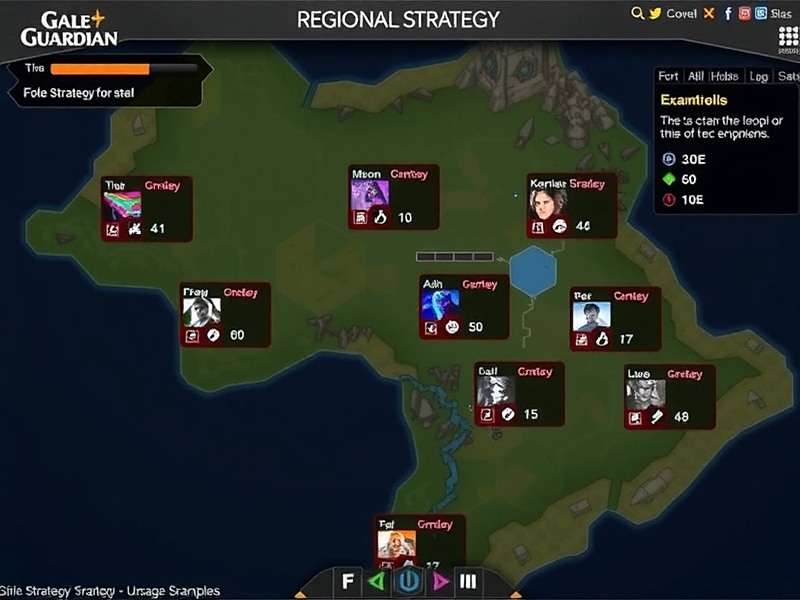
Advanced Gameplay Tips from Top Players
Experienced Gale Guardian players, including several who have reached the highest "National Director" rank, have shared these advanced strategies:
Balance Short-Term and Long-Term Investments: "New players often make the mistake of focusing only on immediate threats. Every season, I allocate at least 30% of my resources to long-term projects like weather stations and community education centers. These investments pay huge dividends in later stages when weather patterns become more unpredictable. For example, a well-educated community evacuates 50% faster, which can mean the difference between saving lives and suffering losses." - Deepak, 37, Delhi (National Director rank)
Master the Art of Forecasting Interpretation: "The key to success in Gale Guardian is understanding the subtle clues in the weather forecasts. Certain cloud patterns and wind shifts always precede specific events—for example, a sudden drop in temperature often means a dust storm is coming in Rajasthan. I keep a 'weather journal' in the game, noting which forecast indicators lead to which events. Over time, you'll learn to predict weather changes before the official forecast updates. This gives you a crucial head start on preparation." - Kavita, 34, Chennai (State Coordinator rank)
Use Traditional Knowledge to Your Advantage: "One of the best features of Gale Guardian is that it incorporates traditional weather signs alongside modern technology. I've found that these traditional signs often predict weather changes before the game's 'modern' forecast tools. For example, if the game shows birds flying low or ants building higher mounds, I start preparing for rain—even if the modern forecast doesn't show it yet. Combining traditional knowledge with modern tools gives you the most complete picture of upcoming weather." - Mohan, 45, Hyderabad (State Coordinator rank)
Specialize Your Skill Tree Wisely: "Don't try to be good at everything—specialize in the skills that match your region's challenges. If you're managing a coastal state like Odisha, focus on cyclone-related skills. If you're in Rajasthan, specialize in heatwave and dust storm management. I've found that players who specialize reach higher ranks faster than those who spread their skills too thin. Once you master one region, you can unlock skills for other weather types as you progress to higher ranks." - Neha, 31, Bangalore (National Director rank)
Learn from Failure: "Every player makes mistakes—especially when starting out. The key is to learn from them. After every failed mission, I review the evaluation carefully to see where I went wrong. Did I allocate resources incorrectly? Did I miss a key forecast indicator? Did I underestimate the severity of the weather event? Gale Guardian's evaluation system is incredibly detailed, and taking the time to understand your mistakes will make you a better player. I still review my evaluations regularly, even at the National Director rank." - Vikram, 40, Kolkata (National Director rank)
Traditional Weather Wisdom in Gale Guardian
Many Indian players have incorporated traditional weather forecasting knowledge into their Gale Guardian strategies, finding that these age-old techniques often complement the game's modern forecasting tools:
"My grandfather taught me to read the behavior of certain birds to predict rain. In Gale Guardian, I've noticed that when the game shows birds flying in large flocks or seeking shelter in unusual places, rain is almost always coming—sometimes even before the official forecast updates. The game's developers must have studied these traditional signs because they often match what my grandfather taught me. Using both the traditional signs and the modern forecast gives me a huge advantage." - Lakshmi, 36, Vijayawada, Andhra Pradesh
"In our village in Himachal Pradesh, we've always observed the direction of smoke to predict wind patterns. If smoke rises straight up, we know the weather will be stable. If it blows horizontally, a storm is coming. I apply this same logic in Gale Guardian when positioning windbreaks and emergency shelters. Before building a cyclone shelter, I check the game's wind direction indicators—just like I would check smoke direction in real life. It's amazing how traditional knowledge still applies in a modern game!" - Raj, 42, Shimla, Himachal Pradesh
"My grandmother used to say that if the moon has a ring around it, rain is coming within three days. I've tested this in Gale Guardian, and it's surprisingly accurate! When the game shows a ring around the moon during the night cycle, I start preparing for rain—even if the forecast only shows a 20% chance. More often than not, the rain comes exactly when the traditional sign predicts it. This combination of old and new knowledge has helped me become one of the top players in my region." - Suresh, 38, Coimbatore, Tamil Nadu
"Farmers in Punjab have always used the appearance of certain clouds to predict weather. 'Cotton-like clouds' mean good weather, while 'dark, towering clouds' mean thunderstorms. In Gale Guardian, I pay close attention to the cloud types shown in the forecast. The game's cloud graphics are so detailed that I can identify the same cloud types my father taught me about. This helps me prepare for weather events days in advance, giving my communities more time to get ready." - Amrit, 44, Ludhiana, Punjab
Localized Events and Special Promotions
The developers of Gale Guardian have created a dynamic calendar of events that align with Indian festivals, seasonal changes, and historical weather events. These events keep the game fresh and encourage ongoing engagement throughout the year, while also celebrating India's cultural diversity.
Festival-Themed Events
Gale Guardian features special limited-time events tied to major Indian festivals, blending cultural celebrations with weather management challenges:
• Holi Heatwave Challenge (March): A week-long event around Holi where players must manage early summer heatwaves while balancing festival preparations. The event includes special Holi-themed challenges, like protecting colored powders and water supplies from extreme heat. Players can earn unique rewards, including Holi-themed weather monitoring equipment and traditional water conservation tools. The event also includes educational content about staying safe during Holi when temperatures rise.
• Monsoon Mahotsav (June-July): A month-long event coinciding with the onset of the southwest monsoon. Players compete to manage the first monsoon rains across different regions of India, with each region presenting unique challenges. The event features decorative elements inspired by monsoon celebrations from across India, such as Kerala's Onam and Assam's Bihu. Top performers receive "Monsoon Master" badges and special in-game currency that can be used to unlock advanced weather management tools.
• Durga Puja Cyclone Preparedness (October): Special challenges focused on cyclone preparedness during the Durga Puja season in West Bengal and Odisha. The event features decorative elements inspired by pandals and Durga idols, and challenges include protecting puja pandals from cyclone damage while ensuring the safety of devotees. Players can earn unique rewards like traditional weather forecasting instruments used in Bengal for centuries. The event also includes educational content about balancing religious celebrations with safety during cyclone season.
• Pongal Weather Festival (January): Focuses on managing post-monsoon weather patterns crucial for Tamil Nadu's agricultural sector during the Pongal harvest festival. Players must ensure optimal weather conditions for harvesting crops and preparing traditional Pongal dishes. The event includes special Pongal-themed challenges, like protecting sugarcane crops from unexpected cold waves. Rewards include agricultural tools used in traditional Tamil farming and Pongal-themed decorations for in-game villages.
• Diwali Pollution Management (November): A unique event that addresses the challenge of air pollution during Diwali. Players must balance the celebration of Diwali with managing air quality, using a combination of weather forecasting and community education. Challenges include predicting wind patterns to anticipate pollution hotspots and organizing awareness campaigns about eco-friendly Diwali practices. Rewards include pollution-monitoring tools and eco-friendly firecracker alternatives for in-game celebrations.

Seasonal Weather Challenges
In addition to festival events, Gale Guardian offers seasonal challenges that correspond to India's distinct weather seasons, providing players with relevant and timely content throughout the year:
• Pre-Monsoon Thunderstorm Challenge (March-May): This event focuses on preparing for and managing severe thunderstorms, dust storms, and early heatwaves across northern India. Players must use a combination of early warning systems and emergency shelters to protect communities. The challenge includes special missions based on historical pre-monsoon weather events, like the 2018 dust storm that affected Uttar Pradesh and Rajasthan. Top performers receive "Thunderstorm Defender" badges and advanced lightning detection equipment for their in-game regions.
• Monsoon Management Mastery (June-September): The game's most extensive event, spanning the entire southwest monsoon season. Players progress through a series of challenges that reflect the changing monsoon patterns across India, from the onset in Kerala to the withdrawal in Rajasthan. Challenges include flood management in Assam, landslide prevention in Uttarakhand, and urban flooding control in Mumbai. The event features a leaderboard that tracks performance across different regions, with state-level winners receiving recognition from the game's official partners, including the IMD. Rewards include advanced monsoon forecasting tools and traditional rainwater harvesting systems used in different parts of India.
• Cyclone Season Defense (October-December): This event focuses on cyclone preparedness and response, particularly for India's eastern and western coastal regions during the peak cyclone season. Players must manage the entire cyclone lifecycle, from early detection to post-cyclone recovery. The event includes realistic simulations of different cyclone intensities, from tropical depressions to severe cyclonic storms. Challenges include evacuating coastal communities, protecting critical infrastructure, and coordinating relief efforts with in-game versions of the NDRF. Rewards include cyclone tracking equipment and specialized vehicles used in real cyclone rescue operations.
• Winter Weather Watch (January-February): This event focuses on managing winter weather challenges across India, including cold waves in northern India, fog in the Indo-Gangetic plain, and winter rainfall in southern India. Players must balance the needs of different communities, from protecting homeless populations from cold waves to ensuring safe transportation during foggy conditions. Challenges include managing irrigation systems during winter to prepare for the upcoming agricultural season. Rewards include cold weather gear for in-game characters and advanced fog detection systems used in real airports and highways.
Collaborative Events with Indian Organizations
Gale Guardian has partnered with several prominent Indian organizations to create special in-game events that combine entertainment with real-world impact. These collaborations ensure that the game's content remains accurate, relevant, and beneficial to players:
• IMD Weather Expert Challenge: Developed in collaboration with the India Meteorological Department, this quarterly event challenges players to predict weather patterns using the same data and methods as professional meteorologists. The event includes special missions where players must interpret real historical weather data from the IMD archives. Top performers receive certificates from the IMD and the opportunity to interact with real meteorologists during virtual workshops. The event also includes educational content about the science of weather forecasting and the work of the IMD.
• NDRF Rescue Simulation: Created in partnership with the National Disaster Response Force, this event allows players to experience the challenges of real disaster response operations. Players take on the role of NDRF personnel, managing rescue missions during weather emergencies like floods and cyclones. The missions are based on real NDRF operations, and players must follow actual NDRF protocols and procedures. Successful completion of the event unlocks special NDRF-themed equipment and vehicles for use in the main game. The event also raises awareness about the important work of the NDRF and how communities can support their efforts.
• Agricultural Weather Challenge: Developed in collaboration with the Ministry of Agriculture and Farmers Welfare, this event focuses on the impact of weather on India's agricultural sector. Players must manage weather-related challenges faced by farmers, such as droughts, floods, and unseasonal rain. The event includes realistic simulations of different crops and their specific weather requirements. Players learn about crop insurance schemes and government support programs available to farmers during weather emergencies. Rewards include agricultural tools and techniques that can be applied in real farming, as well as in-game resources to support virtual farming communities.
• Climate Change Awareness Event: Created in partnership with the Ministry of Environment, Forests and Climate Change, this annual event explores the impact of climate change on India's weather patterns. Players experience how rising temperatures and changing rainfall patterns are altering traditional weather cycles. The event includes educational content about climate change science and practical steps individuals and communities can take to mitigate its effects. Players can earn "Climate Guardian" badges by completing challenges focused on sustainability and environmental protection. The event also supports real-world climate action by donating a portion of in-game purchases to environmental conservation projects in India.
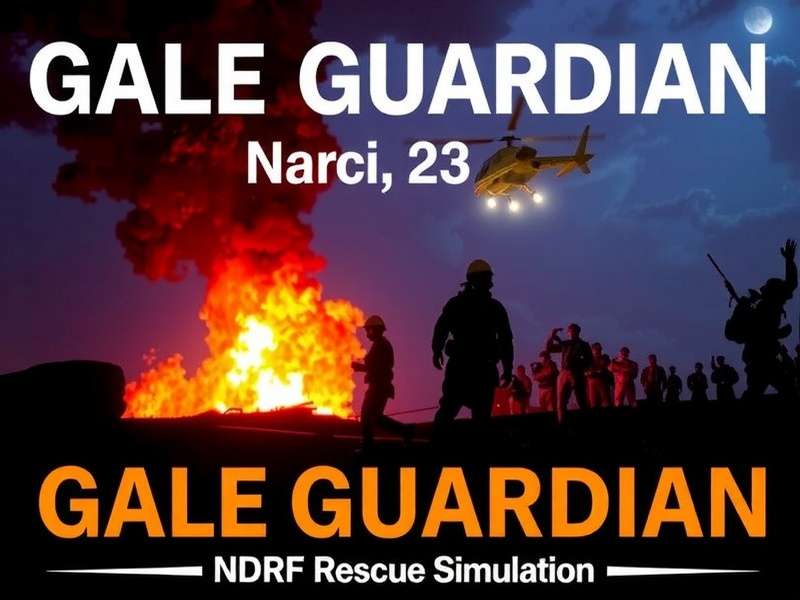
Localization and Regional Adaptations
One of the key factors behind Gale Guardian's success in India is its extensive localization effort. The developers recognized early on that a one-size-fits-all approach would not work for a country as diverse as India, with its varied languages, cultures, and weather patterns. As a result, Gale Guardian has been carefully adapted to resonate with players across different regions of India.
Language Support in Gale Guardian
Recognizing India's linguistic diversity, Gale Guardian currently supports 16 Indian languages, with plans to add more in future updates. This extensive language support ensures that players from different linguistic backgrounds can enjoy the game in their mother tongue:
• Hindi (with support for both Devanagari and Latin scripts)
• Bengali
• Telugu
• Tamil
• Marathi
• Gujarati
• Kannada
• Malayalam
• Punjabi (with support for both Gurmukhi and Latin scripts)
• Odia
• Assamese
• Nepali
• Konkani
• Urdu (with support for both Nastaliq and Latin scripts)
• Kashmiri
• Manipuri
Importantly, the localization goes beyond simple translation. The game uses region-specific terminology for weather phenomena, ensuring that players from different parts of India encounter language that feels natural and familiar. For example:
• In Tamil Nadu, cyclones are referred to as "maavadu" (மாவாடு), the traditional Tamil term, rather than the English word "cyclone."
• In Punjab, the game uses the term "khadak" (ਖਦਕ) for dust storms, reflecting local language usage.
• In Kerala, the southwest monsoon is referred to as "edavappathi" (എടവപതി), the traditional Malayalam term for the June monsoon onset.
This attention to linguistic detail has helped Gale Guardian resonate with players on a deeper level, making the game feel like a product created specifically for Indian audiences rather than a generic international game adapted for India.
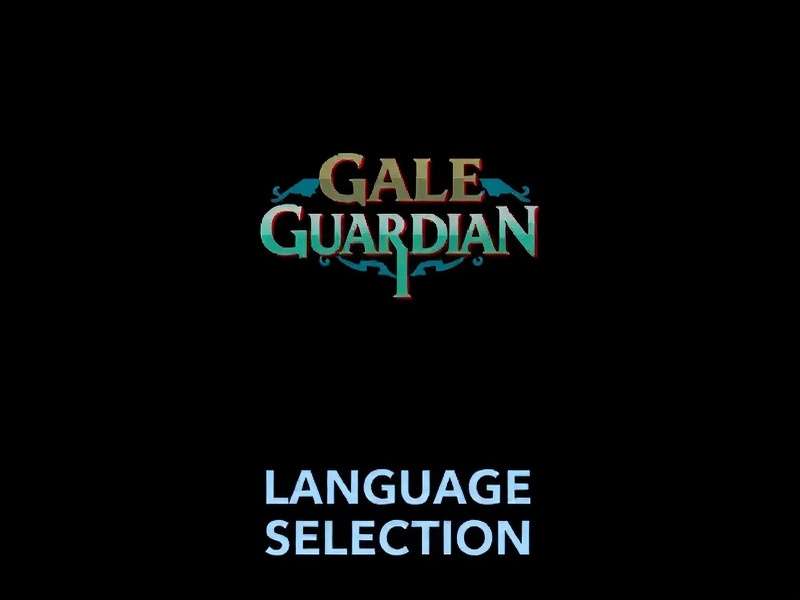
Regional Content Adaptations
Gale Guardian features significant content variations tailored to different parts of India, reflecting the unique weather challenges and cultural contexts of each region. These adaptations ensure that the game remains relevant and engaging for players across the country:
• North India: The game's North India content focuses on cold waves in the Himalayan region, fog management in the Indo-Gangetic plain, and dust storms in Rajasthan. The region's cultural elements include references to festivals like Lohri and Makar Sankranti, with special winter weather challenges tied to these events. The game also includes traditional winter clothing for characters, like phulkaris from Punjab and pashminas from Jammu and Kashmir.
• East India: East India content emphasizes cyclone management along the Odisha and West Bengal coasts, heavy monsoon rains in Assam, and the unique weather patterns of the Sunderbans. Cultural elements include Durga Puja-themed challenges, traditional Bengali and Odia clothing for characters, and references to local weather deities like Lord Jagannath, who is believed to protect Odisha from cyclones.
• West India: West India content focuses on drought management in Rajasthan, monsoon flooding in Maharashtra, and cyclones along the Gujarat coast. Cultural elements include references to festivals like Ganesh Chaturthi and Navratri, with special challenges tied to these events. The game also includes traditional western Indian clothing, like chaniya cholis from Gujarat and nauvari sarees from Maharashtra.
• South India: South India content features management of both southwest and northeast monsoons, cyclones in the Bay of Bengal, and the unique weather patterns of the Western and Eastern Ghats. Cultural elements include references to festivals like Pongal, Onam, and Vishu, with special weather challenges tied to these events. The game also includes traditional south Indian clothing, like lungis from Tamil Nadu and kasavu sarees from Kerala.
• Northeast India: The recently expanded Northeast India content focuses on extreme rainfall events, landslides, and the region's unique relationship with the monsoon. Cultural elements include references to festivals like Bihu (Assam), Hornbill Festival (Nagaland), and Losar (Ladakh), with special weather challenges tied to these events. The game also includes traditional northeastern clothing, like mekhelas from Assam and shawls from Nagaland.
These regional adaptations mean that players in different parts of India encounter weather scenarios and cultural references that feel authentic to their local experiences, rather than generic content that could apply to any country.
Cultural Integration in Gale Guardian
Gale Guardian incorporates a wide range of cultural elements that make the game feel authentically Indian, from traditional clothing and music to local festivals and weather-related myths. These cultural touches have helped the game resonate with players on a deeper emotional level:
• Traditional Clothing: In-game characters wear regionally appropriate clothing that changes with the season and weather conditions. For example, characters in Punjab wear warm phulkaris during winter, while those in Kerala wear lightweight mundus during the monsoon. This attention to detail helps players feel a connection to the virtual communities they are protecting.
• Regional Music: The game's background music features traditional instruments from different parts of India, like the sitar from North India, mridangam from South India, and dhol from Punjab. The music changes based on the region being managed, creating an immersive audio experience that reflects India's musical diversity.
• Weather Deities: The game includes references to traditional Indian weather deities, like Indra (god of rain and thunderstorms) and Varuna (god of the oceans and water). These deities appear in special events and challenges, often providing players with helpful bonuses or advice based on traditional myths and legends.
• Local Festivals: As mentioned earlier, the game's events are tied to major Indian festivals, with special challenges and decorations that reflect each festival's traditions. For example, during Diwali, the game's villages are decorated with diyas and rangolis, and players must balance festival celebrations with managing air pollution from firecrackers.
• Traditional Weather Knowledge: The game incorporates traditional weather forecasting methods used by Indian communities for generations, from observing animal behavior to reading cloud patterns. These traditional methods often complement the game's modern forecasting tools, providing players with a more complete picture of upcoming weather events.
• Regional Architecture: The game's villages and towns feature architectural styles specific to different parts of India, from the houseboats of Kashmir to the backwaters of Kerala. These structures are not just aesthetic—they also have different levels of resilience to various weather events, adding another layer of strategic complexity.
This deep integration of Indian culture has helped Gale Guardian become more than just a game—it's a celebration of India's diversity and a recognition of the unique ways in which different communities interact with and adapt to the country's weather patterns.

Community and Social Features
The community aspect of Gale Guardian has played a significant role in its success, creating a platform where players can share real-world weather experiences alongside gaming strategies. This blending of virtual and real-world communities has given the game a unique social impact that extends beyond entertainment.
Guild System: Weather Watch Groups
Gale Guardian's guild system, called "Weather Watch Groups," allows players to collaborate in managing large-scale weather events that affect multiple regions. These groups often form along regional lines, with players from areas with similar weather patterns sharing their expertise and supporting each other.
Weather Watch Groups can have up to 50 members, and each group elects a "Chief Meteorologist" who coordinates group activities. Groups work together to complete special cooperative missions, like managing a large cyclone that affects multiple states or coordinating a national response to an unusual monsoon pattern.
Successful Weather Watch Groups earn special rewards, including unique in-game items and bonuses that can be used to improve their regions. However, many players join groups for the social aspect rather than just the rewards. Guild chat often features discussions about real weather events, with players sharing photos and stories from their communities alongside game tips.
Some particularly active Weather Watch Groups have even organized real-world activities, including:
• Weather awareness workshops in their local communities, often in partnership with local government officials
• Tree-planting drives to combat heat islands in urban areas and prevent soil erosion in rural areas
• Fundraising for communities affected by real weather disasters, with the game's developers matching some donations
• Local meetups during weather seasons to discuss both game strategies and real preparedness measures
This blend of virtual and real-world community engagement has helped Gale Guardian create a loyal player base that feels invested in both the game and the real-world safety of their communities.

Competitive Features and Tournaments
Gale Guardian offers several competitive features that have become popular in the Indian gaming community, providing players with opportunities to test their skills against others and earn recognition:
• Regional Leaderboards: Players compete within their state to achieve the best weather management results, with monthly updates to the leaderboards. Top performers in each state receive special "State Weather Champion" badges and in-game rewards. The leaderboards also track performance across different weather categories, like cyclone management or drought prevention, allowing players to specialize in their areas of expertise.
• National Weather Challenge: A quarterly tournament where players from across India compete to manage the same hypothetical weather scenario. The scenarios are based on historical weather events, like the 2018 Kerala floods or the 2021 Cyclone Tauktae. Players are evaluated on a range of metrics, including lives saved, property protected, and economic impact minimized. The top 100 performers receive national recognition, with the overall winner earning the title of "National Weather Guardian" and a chance to visit the IMD headquarters in Delhi.
• Weather Expert Certification: Players can earn in-game certifications by demonstrating expertise in specific weather phenomena. These certifications require passing challenging exams that test both theoretical knowledge and practical skills. Certifications include "Cyclone Management Specialist," "Monsoon Forecasting Expert," and "Drought Response Professional." These certifications are displayed on player profiles and can help players join top Weather Watch Groups.
• School and College Competitions: Special tournaments organized for student players, with educational institutions competing to develop the most effective weather management strategies. These competitions are often held in partnership with school boards and universities, with prizes including educational scholarships and visits to meteorological research facilities. The competitions have become so popular that some schools now include Gale Guardian tournaments as part of their annual extracurricular activities.
• Professional League: Launched in July 2024, the Gale Guardian Professional League is India's first esports league focused on a weather strategy game. The league features 16 professional teams representing different Indian states, competing for a prize pool of ₹1 crore. Matches are streamed live on popular gaming platforms, with commentary from both esports personalities and weather experts. The league has helped raise the profile of Gale Guardian and attract more players to the game.
User-Generated Content and Community Creativity
The Gale Guardian community in India has created a wealth of user-generated content that extends beyond the game itself, demonstrating the game's ability to inspire creativity and knowledge sharing:
• YouTube Tutorials: Thousands of tutorial videos have been created by players, explaining advanced strategies and techniques for managing different weather scenarios. Many of these tutorials are in regional languages, making the game's more complex features accessible to players who may not be comfortable with English. Some popular Gale Guardian YouTubers have built audiences of over 100,000 subscribers.
• Fan-created Weather Guides: Players have developed detailed guides that blend game strategies with real-world weather knowledge. These guides often include information about local weather patterns, traditional forecasting methods, and safety tips that can be used in real life. Many of these guides are shared on community forums and social media groups, helping new players learn the game while also educating people about weather safety.
• Community Forums: Active online forums where players share real weather stories alongside game experiences. These forums have become valuable resources for weather information, with players often sharing real-time updates about weather events in their areas. During major weather events like cyclones, these forums become virtual support groups where players share safety tips and offer assistance to those affected.
• Fan Art and Creative Content: The game has inspired a vibrant fan art community, with players creating illustrations of in-game characters, weather events, and regional landscapes. Some artists have even created traditional Indian artworks, like Madhubani paintings and Tanjore paintings, featuring Gale Guardian themes. The game's developers regularly feature the best fan art on their official social media channels.
• Local Meetups and Workshops: Players have organized local meetups in cities across India, from Delhi and Mumbai to smaller towns like Bhubaneswar and Thiruvananthapuram. These meetups often include workshops on weather safety, with local meteorologists and disaster management officials invited to speak. The meetups have helped build strong offline communities around the game, with players forming lasting friendships based on their shared interest in weather and the game.
The developers actively encourage this community creativity by featuring the best user-generated content in official game updates and social media channels. This has created a virtuous cycle where the game inspires real-world learning and community building, which in turn enriches the gaming experience for everyone.
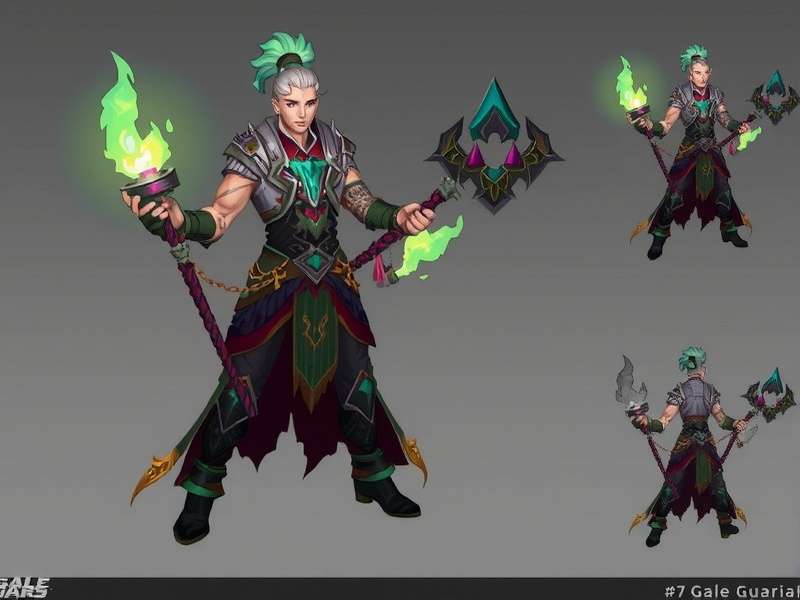
Educational Impact and Real-World Applications
Unlike most mobile games, Gale Guardian has demonstrated tangible educational benefits and real-world applications. Its unique blend of entertainment and information has made it a valuable tool for weather education and disaster preparedness across India.
School and Educational Institution Adoption
Over 8,500 schools across India have incorporated Gale Guardian into their curriculum, particularly in science, geography, and environmental studies classes. Teachers report that the game helps students understand complex concepts that are often difficult to teach through traditional methods:
• Meteorology and Weather Science: The game's realistic simulations help students visualize how weather systems form and interact. Concepts like air pressure, humidity, and wind patterns become more tangible when students can see their effects in the game.
• Climate Systems: Students learn about India's unique climate patterns, including the monsoon system, and how they affect different regions of the country. The game's seasonal cycles help students understand the timing and impact of different weather events.
• Environmental Conservation: The game includes missions focused